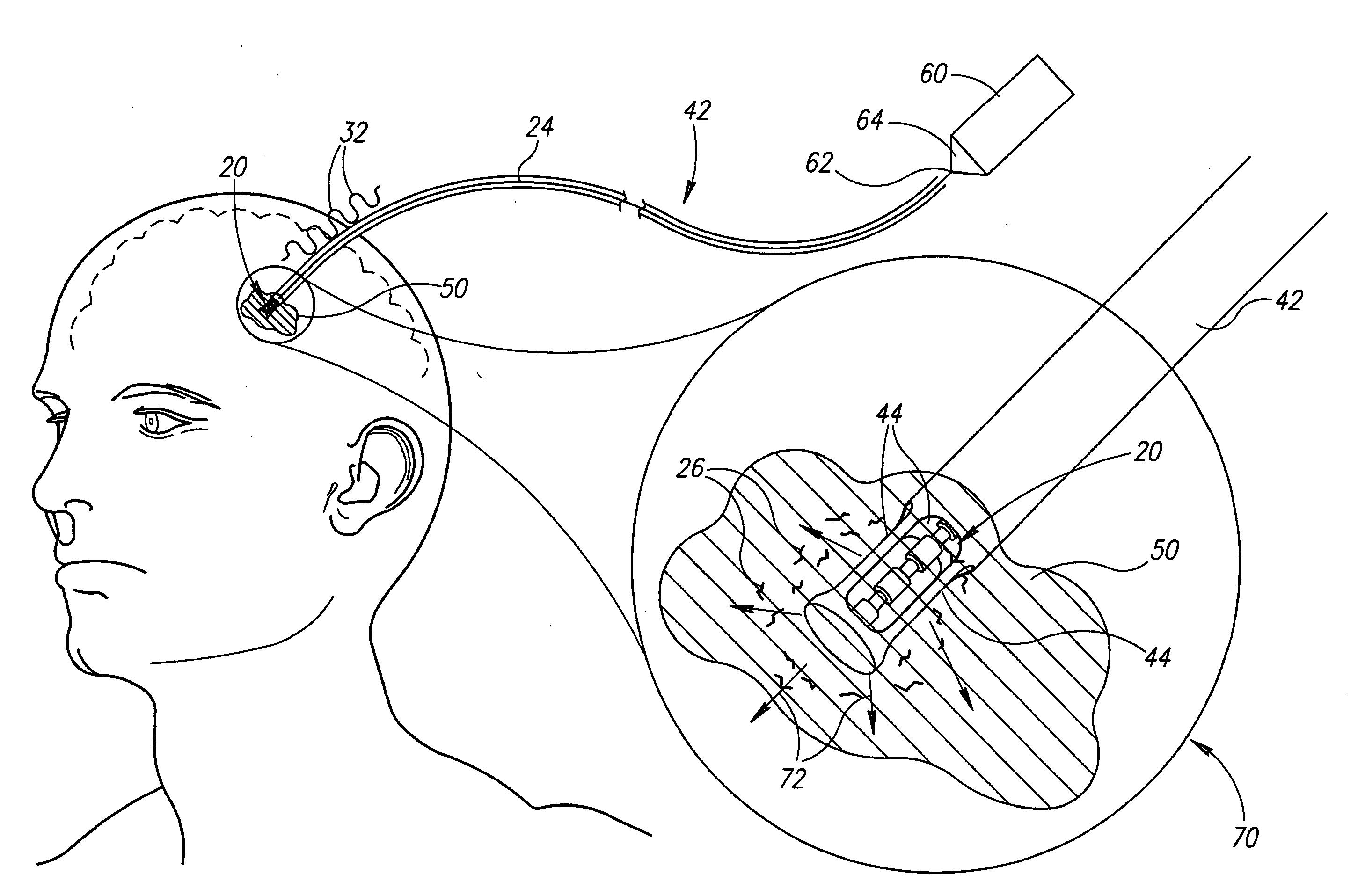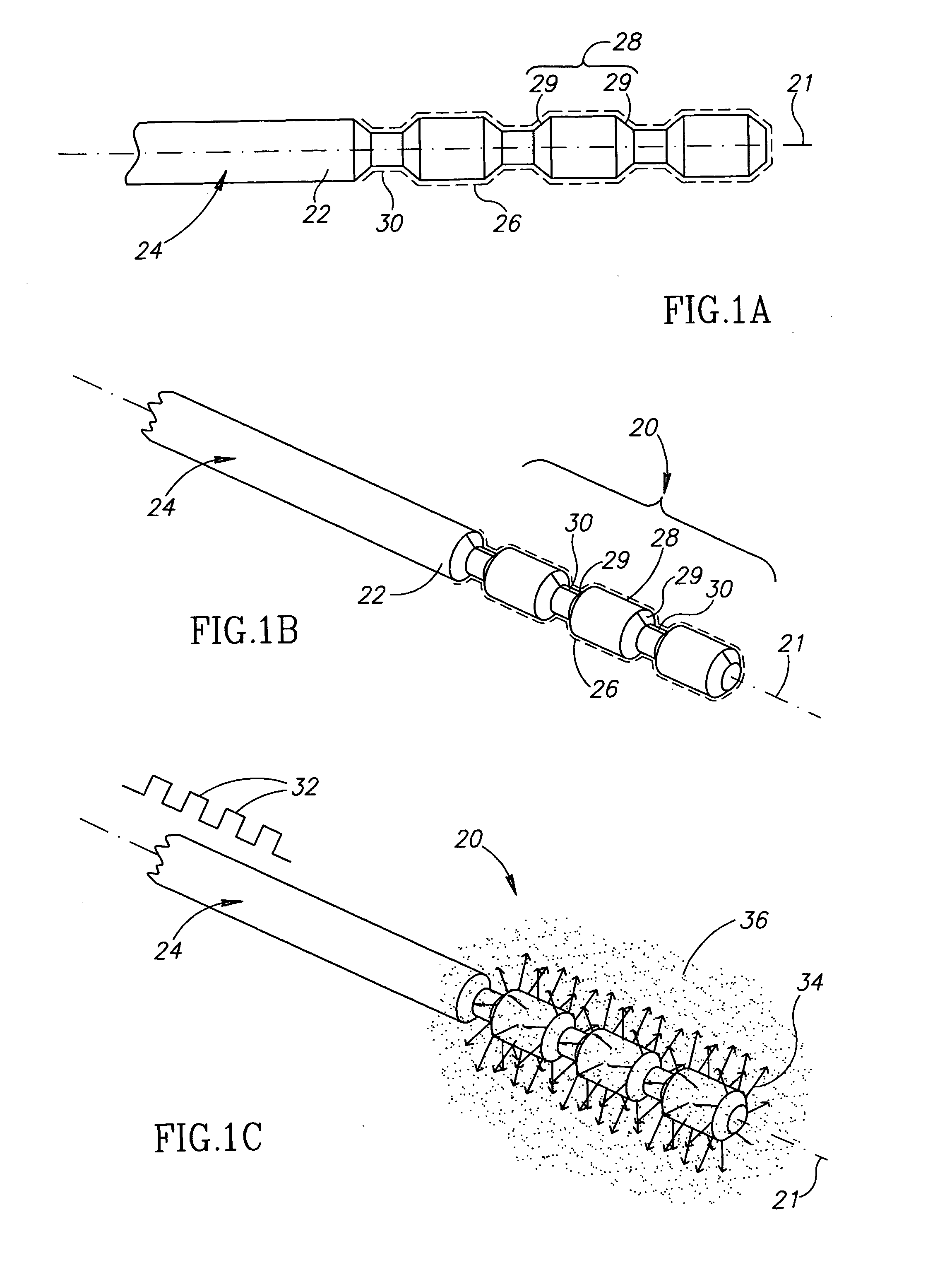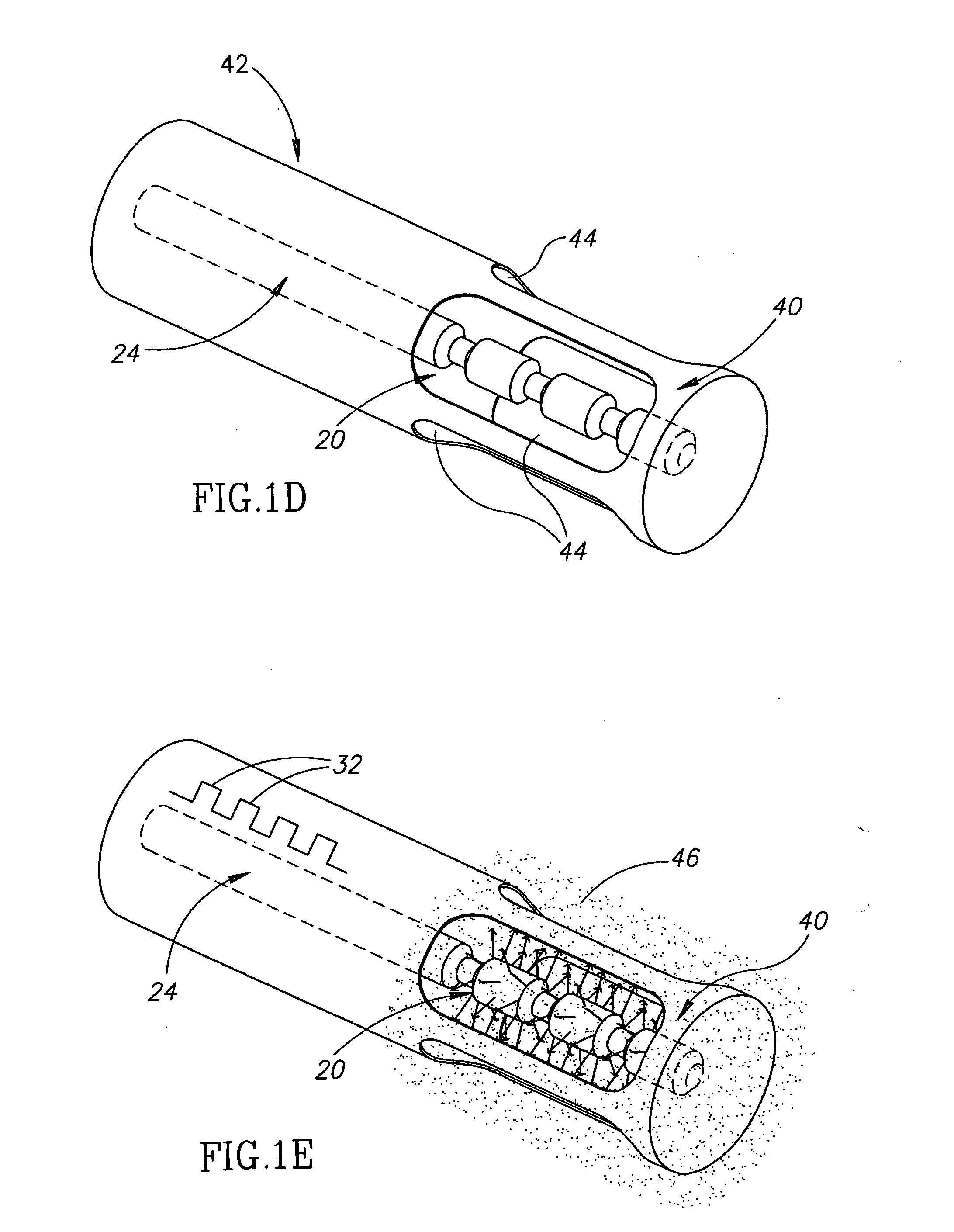Ultrasonic Drug-Delivery System
a drug delivery and ultrasonic technology, applied in the field of ultrasonic drug delivery systems, can solve the problems of difficult to localize the quantity of drugs, the drug penetration to the brain may be severely hindered by the blood brain barrier, and the tissue influence of tissue, etc., to achieve the effect of reducing the q of the vibrator, reducing the influence of tissue, and reducing the influence of vibration
- Summary
- Abstract
- Description
- Claims
- Application Information
AI Technical Summary
Benefits of technology
Problems solved by technology
Method used
Image
Examples
Embodiment Construction
[0056]FIGS. 1A-1E schematically show an ultrasonic drug-delivery radiator in the shape of an elongate ultrasonic horn 20 having an axis 21, in accordance with an embodiment of the present invention. FIGS. 1A and 1B schematically show a longitudinal cross section of horn 20 and a perspective view of the horn respectively. Horn 20 is coupled to a distal end 22 of a catheter wire 24, only a portion of which is shown. Optionally, horn 20 is formed as an integral part of catheter wire 24 using any of many different methods, such as for example stamping and / or machining, known in the art.
[0057]A drug, represented by a dashed line 26, is adhered to surface regions of horn 20. In some embodiments of the invention, the drug is adhered to horn 20 using an electrodeposition process. In some embodiments of the invention, the drug is adhered by wetting the horn with an appropriate solution or dispersion containing the drug and then drying the horn.
[0058]Ultrasonic energy to excite horn 20 to vib...
PUM
 Login to View More
Login to View More Abstract
Description
Claims
Application Information
 Login to View More
Login to View More - R&D
- Intellectual Property
- Life Sciences
- Materials
- Tech Scout
- Unparalleled Data Quality
- Higher Quality Content
- 60% Fewer Hallucinations
Browse by: Latest US Patents, China's latest patents, Technical Efficacy Thesaurus, Application Domain, Technology Topic, Popular Technical Reports.
© 2025 PatSnap. All rights reserved.Legal|Privacy policy|Modern Slavery Act Transparency Statement|Sitemap|About US| Contact US: help@patsnap.com



